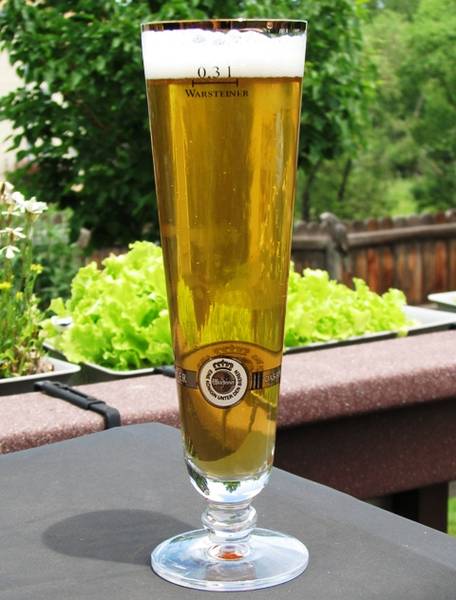Thanks for the compliments.
The rig isn't all THAT big. It measures 60" x 20". That is the same size as our Weber gas BBQ with side burner.
Since I posted those pictures, the brew frame has been moved to the deck in the back of our house. It has been a bit of a challenge to brew outside this spring. The beer I am sipping on now was made during a rainstorm that turned into a hailstorm right in the middle of lautering.
Quite a lot of fun donning the rain gear to check water level in the mash tun. It all turned out well.
I have made 6 brews on the rig since. All have been fairly easy. No surprises on the mechanical side.
The last 2 have been 10 gallon batches. The first 10 gallon was slightly stressfull when there was a small boil over. Filling the keggle to 15 gallons, hitting boil and then adding hops was too much. The second batch I waited 30 minutes to add hops. The evaporation took the volume down to a point that reduced the boil over fears. I do use a de-foamer, but I simply need a bit bigger kettle to end up with 10 gallons in my serving tanks.
The rig isn't all THAT big. It measures 60" x 20". That is the same size as our Weber gas BBQ with side burner.
Since I posted those pictures, the brew frame has been moved to the deck in the back of our house. It has been a bit of a challenge to brew outside this spring. The beer I am sipping on now was made during a rainstorm that turned into a hailstorm right in the middle of lautering.
Quite a lot of fun donning the rain gear to check water level in the mash tun. It all turned out well.
I have made 6 brews on the rig since. All have been fairly easy. No surprises on the mechanical side.
The last 2 have been 10 gallon batches. The first 10 gallon was slightly stressfull when there was a small boil over. Filling the keggle to 15 gallons, hitting boil and then adding hops was too much. The second batch I waited 30 minutes to add hops. The evaporation took the volume down to a point that reduced the boil over fears. I do use a de-foamer, but I simply need a bit bigger kettle to end up with 10 gallons in my serving tanks.























































![Craft A Brew - Safale S-04 Dry Yeast - Fermentis - English Ale Dry Yeast - For English and American Ales and Hard Apple Ciders - Ingredients for Home Brewing - Beer Making Supplies - [1 Pack]](https://m.media-amazon.com/images/I/41fVGNh6JfL._SL500_.jpg)


